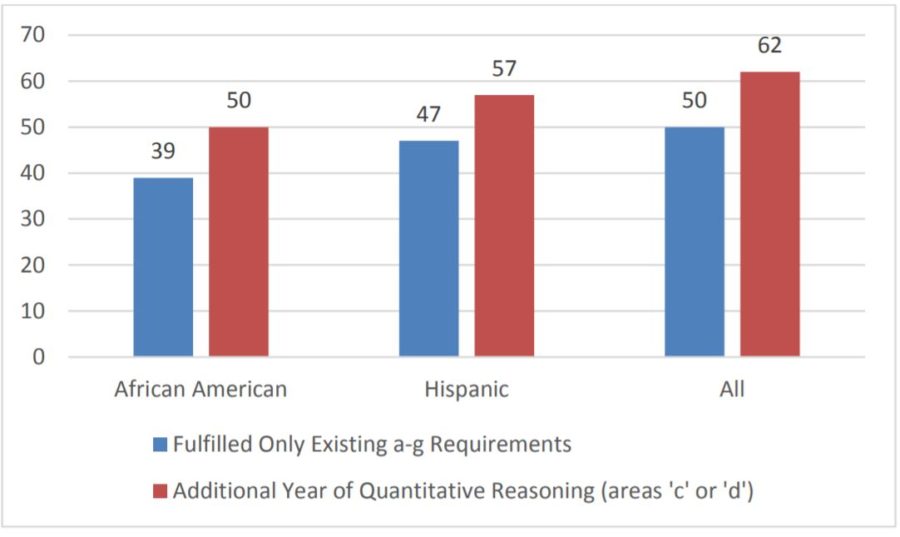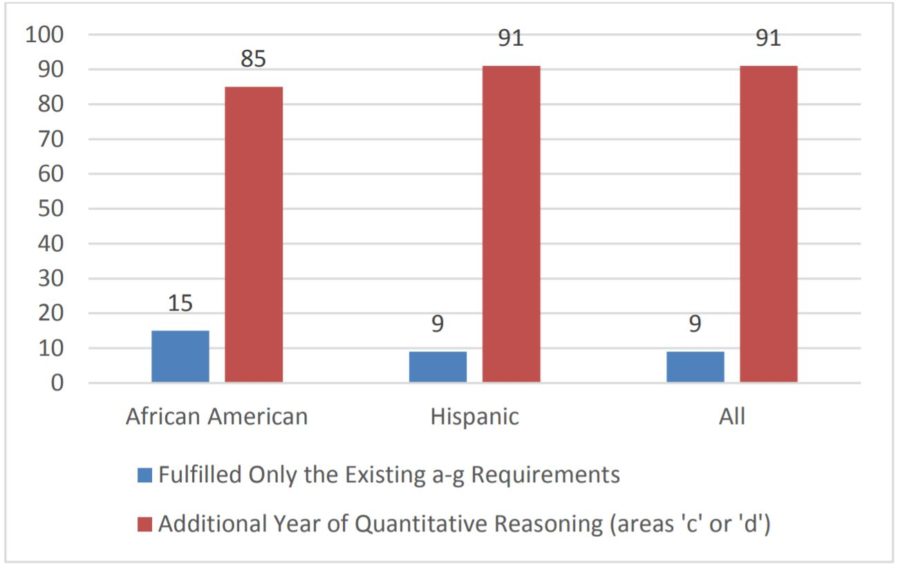The California State University Board of Trustees is considering adding an additional STEM course requirement for first-year admission into the CSU system.
During the Thursday special Board of Trustees meeting, CSU officials proposed a requirement for all first-year CSU applicants to take a quantitative reasoning course — which would be fulfilled by a math, science or applicable elective course — increasing the current requirement from one class to two.
If the recommendation passes, it will be a requirement by 2026.
“In this data-rich era when information from the internet is available instantly, all students must graduate with the ability to analyze and synthesize knowledge of the world around them,” said James T. Miner, assistant vice chancellor. “Whether analyzing an investment, purchasing decisions, interpreting nutritional facts, calculating dosage for medication or making decisions for political polling, quantitative reasoning skills are utilized every day.”
Miner defined quantitative reasoning as “the ability to think and reason intelligently about measurement in the real world.”
The objective of the change is for first-year CSU students to complete their quantitative reasoning requirement, or sub-area “B4” general education requirement during their first year of college. According to data supplied by CSU, students who completed a fourth year of mathematics in high school were 20% more likely to complete the quantitative reasoning requirement their first year.

The current CSU admission requirement is two years of college-preparatory science classes and three years of college-preparatory mathematics classes.
The proposal has been met with opposition by students and educators who feel that the additional requirement would negatively affect minority students, students who do not excel in STEM courses and students facing a lack of course options.
“I’d like to know all the schools that only have one [quantitative reasoning course] option … and the options students have. It’s definitely a concern of mine,” Trustee Lillian Kimbell said. “My son had a great deal of difficulty with mathematics.”
Some academic officials and educators also fear that enrollment will drop in arts and humanities courses if an additional STEM class becomes a requirement.
“My concern is, will this effectively eliminate humanities, art courses, music, ethnic studies?” Trustee Wenda Fong asked during the question portion of the meeting. “Because we’re focusing on quantitative reasoning, will those efforts move away from those other courses?”
According to Vice Chancellor Marquita Grenot-Scheyer, quantitative reasoning is present and necessary in humanities courses. She added that the skills learned in the additional STEM course would also aid students in other subjects.
A study by the CSU showed that four-year graduation rates increased by 9% and six-year graduation rates increased by 12% for students who took a fourth year of a quantitative reasoning course in high school.


Long Beach Unified School District, the largest school district in California, reports 70% of students below the federal poverty level and 86% as non-white but has already implemented a four-year math requirement. The 2019 high school graduating class was the first class with the new prerequisite and saw a 15% increase in students who completed the “A through G” requirements, according to Jill Baker, deputy superintendent of LBUSD.
“Our why is a long-term engagement at the college promise dialog with our Long Beach City College and Cal State Long Beach,” Baker said. “[LBUSD] wants to reduce the need for Long Beach Unified students to take remedial classes when they exit our system.”
While many school districts across California have already implemented the requirement, not all have the resources to do so. CSU officials noted that continuation schools and schools in rural areas currently do not meet the proposed standards.
Grenot-Scheyer emphasized that students would not be denied CSU admission due to a lack of high school class options. Exemptions will be offered to students who are unable to access a qualifying course.
“Let me be very clear, under this proposal no student would be denied access to the CSU because they could not take a quantitative reasoning course through no fault of their own,” she said. “This is consistent with the phase and approach that was successfully implemented when the ‘A’ through ‘G’ requirements were originally enacted.”

To help prepare high schools for the policy, the CSU will be investing $10 million over the next four years to prepare STEM teachers for additional classes. The investment is in addition to the $2.7 million a year that the CSU currently uses to support teachers.
“We acknowledge that implementing this requirement would be a collective effort,” Grenot-Scheyer said. “As was the case with the ‘A’ through ‘G’ requirements 30 years ago, this proposal would require PK-12 schools to revise their course offerings, but CSU faculty and staff will be working with these districts as partners over the next seven years.”
In contrast, the University of California system requires two years of college-preparatory science classes and three years of college-preparatory mathematics classes for incoming first-year students. If the quantitative reasoning requirement passes, some students may be admitted to UCs but not CSUs.
A formal proposal for the quantitative reasoning requirement will be brought forth as an information item at the next CSU Board of Trustees meeting, Sept. 24 and 25, at the Office of the Chancellor in Long Beach.




